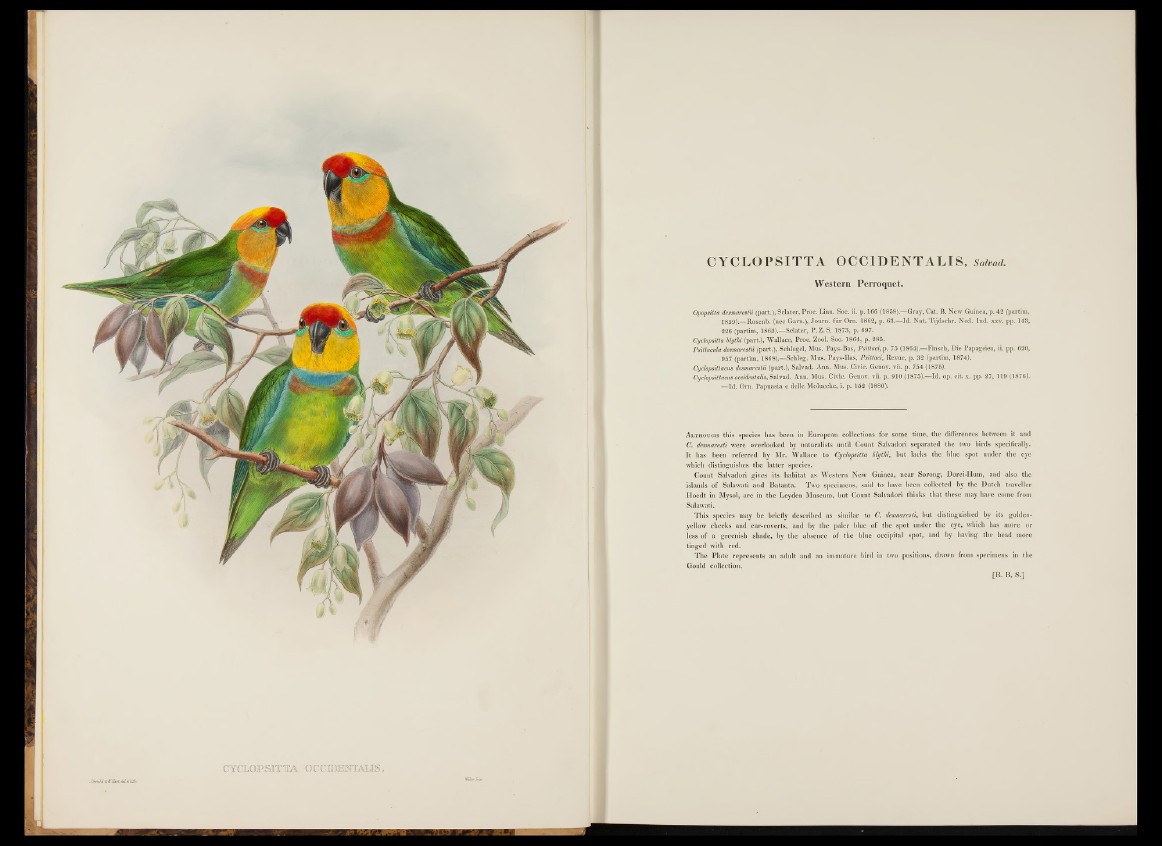
CYC LO PS ITT A OCCIDENTALI S y Salvad.
Western Perroquet.
Opopsitta desmarestii (part.), Sclater, Proc. Linn. Soc. ii. p. 166 (1858).—Gray, Cat. B. New Guinea, p. 42 (partira,
1859).—Rosenb. (nec Garn.), Journ. fiir Orn. 1862, p. 63.—Id. Nat. Tijdschr. Ned. Ind. xxv. pp. 143,
226 (partim, 1863).—Sclater, P. Z. S. 1873, p. 697.
Cyclopsitta blythi (part.), Wallace, Proc. Zool. Soc. 1864, p. 285.
Psittacula desmarestii (part.), Schlegel, Mus. Pays-Bas, Psittaci, p. 75 (1864).—Finsch, Die Papageien, ii. pp. 620,
957 (partim, 1868).—Schleg. Mus. Pays-Bas, Psittaci, Revue, p. 32 (partim, 1874).
Cyclopsitlacus desmarestii (part.), Salvad. Ann. Mus. Civic. Genov, vii. p. 754 (1875).
Cyclopsittacus occidentalis, Salvad. Ann. Mus. Civic. Genov, vii. p. 910 (1875).— Id. op. cit. x. pp. 27, 119 (1876).
—Id. Orn. Papuasia e delle Molucche, i. p. 152 (1880).
Although this species has been in European collections for some time, the differences between it and
C. desmaresti were overlooked by naturalists until Count Salvadori separated the two birds specifically.
I t has been referred by Mr. Wallace to Cyclopsitta blythi, but lacks the blue spot under the eye
which distinguishes the latter species.
Count Salvadori gives its habitat as Western New Guinea, near Sorong, Dorei-Hum, and also the
islands o f Salawati and Batanta. Two specimens, said to have been collected by the Dutch traveller
Hoedt in Mysol, are in the Leyden Museum, but Count Salvadori thinks th at these may have come from
Salawati.
This species may be briefly described as similar to C. desmaresti, but distinguished by its golden-
yellow cheeks and ear-coverts, and by the paler b lu e,o f the spot under the eye, which has more or
less o f a greenish shade, by the absence o f the blue occipital spot, and by having the head more
tinged with red.
T h e Plate represents an adult and an immature bird in two positions, drawn from specimens in the
Gould collection.
[R. B. S.]